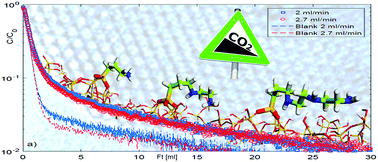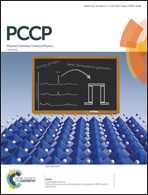CO2 adsorption on different organo-modified SBA-15 silicas: a multidisciplinary study on the effects of basic surface groups†
Abstract
Hybrid organic–inorganic SBA-15 silicas functionalized with increasing amounts of amino groups were studied in this work aiming to evaluate the effects of their physico-chemical properties on CO2 capture ability. Three different amino-silane species were used: 3-aminopropyltriethoxysilane (APTS), 3-(2-aminoethyl)aminopropyltrimethoxysilane (EAPTS) and 3-[2-(2-aminoethyl)aminoethyl] aminopropyltrimethoxysilane (PAPTS). More specifically, samples were prepared by using two methods, following a post-synthesis grafting procedure and a one-pot preparation method. Experimental and computational techniques were used to study the structural and textural properties of the obtained samples and their surface species in relation to the adopted preparation method. For the most reactive samples, additional hints on the interactions of organosilane species with the silica surface were obtained by a combination of IR and SS-NMR spectroscopy, with particular emphasis on the effects of the silane chain length on the mobility of the organic species. Advanced complementary solid-state NMR techniques provided deeper information on the interactions of organosilane species with the silica surface. Finally, the amount of CO2 adsorbed was estimated by comparing the classical microcalorimetric analysis method with a new type of screening test, the Zero Length Column analysis, which is able to evaluate small amounts of samples in a very short time and the adsorption properties of the adsorbents. The reactivity of the amino-modified silica samples is deeply influenced by both the preparation route and by the type of organosilane used for the functionalization of the materials. In particular, samples prepared by the post-synthesis grafting procedure and containing higher amount of amino groups in the chain are more reactive, following the order PAPTS > EAPTS > APTS.



 Please wait while we load your content...
Please wait while we load your content...